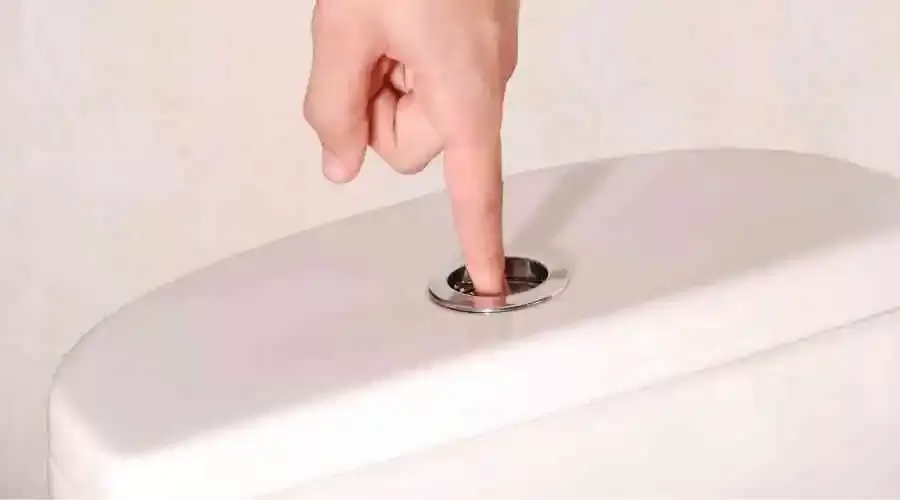Suddenly, one finds themselves staring into the abyss of the tank, grappling with a sense of unease and uncertainty, desperately seeking comprehension amidst the maze of components. Fear not, for we possess the expertise required to demystify every aspect, ranging from flushing to replenishing the tank, leaving no stone unturned in between. Need a plumber?
Elizabeth Drain Service is ready to assist. Share your plumbing concerns with us!The toilet tank generates the siphoning action essential for waste removal during flushing. Below is a list of components within the toilet tank responsible for flushing motion:
- Flush valve
- Fill Valve
- Flapper
- Overflow tube
- Trip lever or button
Handle: Flushing is typically initiated by depressing the handle conveniently located on the tank. When the handle is squeezed, it activates the component known as the Handle Arm within the tank, prompting it to make a pivotal motion. This action sets off a series of events within the tank, including the flapper’s movement, Water from the tank into the bowl, and initiating the siphoning action necessary for waste removal.
Chain: As the handle arm is pulled up, it engages the chain connected to the flapper, causing it to rise. This elevation of the flapper allows Water to enter the toilet bowl via the tank’s flow. It is initiating the flushing process. Once the flushing cycle is complete, the flapper, a rubber component known as the flush valve seal, descends and seals the drain hole of the Valve. This action prevents Water from leaving the tank until the next flush is initiated, ensuring efficient operation and water conservation.
Flapper: The flush Valve is a crucial component of the toilet system, connected to the flapper and responsible for maintaining the rubber seal open. This action allows Water to flow into the toilet bowl during flushing. The drain opening between the toilet bowl and the tank serves as the aperture through which Water enters the bowl after leaving the tank during the flushing process.
Fill the Valve before: the next flush. This Valve will refill the toilet tank with fresh Water. A flexible rubber refill tube links the tank’s fill valve to allow Water to refill the bowl. The flush Valve’s overflow tube is reached.
Filler Float or Float BaWater: A float ball or a filler float will be attached to a toilet’s fill valve. Nevertheless, depending on the kind, this may change. Fill Valve: When the tank is empty, the Valve is adjusted to release Water; however, once the tank is complete, the release of Water ceases. The overflow tube is a part that serves two functions: packed using water and The overflow tube is a part that serves two functions:
- It serves as a failsafe if the filling valve malfunctions or the float ball is loosened, preventing an overflow of Water from the tank and channeling it into the toilet water.
- The overflow and refill tubes are connected so that the toilet bowl may be refilled.
How Does the ‘Flushing’ Happen?
Considering the numerous moving parts and variables involved in the flushing process, it’s understandable that there may be some degree of uncertainty. However, flushing becomes efficient when a water tank’s components are functioning correctly.
Upon pressing the handle, the handle arm ascends, pulling the chain, which lifts the flapper and activates the flush Valve. Releasing the handle enters the cycle, prompting Water to flow swiftly into the bowl through the drain hole. Subsequently, the Water removes waste from the bowl, flushing it away via the system’s primary drain.
How the ‘Refilling’ Happens
The toilet initiates an automatic refill process when the filler floats or the float ball descends to a lower position, signaling the fill valve to activate and allow Water to flow. The Water then enters the tank via a refill tube facilitated by the fill valve. Concurrently, the flapper seals the drain opening, preventing additional Water from entering the toilet bowl.
The refill process concludes once the tank warrants a predefined water level, indicated by the rise of the filler float or water ball.
Call Us for Plumbing & Drainage Services
If any components of your toilet are not functioning correctly, it will become apparent immediately. For specialized plumbing services from skilled and licensed professionals, your best option is to contact Elizabeth Drain SeWater in your area.
Water locations nationwide, Elizabeth Drain Service, offers a straightforward flat-rate pricing structure. She does not impose additional fees for overwater work, ensuring affordable and efficient restoration of optimal toilet function and other drain cleaning services.
To schedule an appointment For a quote, call us at (908) 988-0365 or make an online inquiry price quote. If you’re considering updating the paint in your bathroom, contact the friendly and knowledgeable staff at Five Star Painting, a trusted member of the Neighborly® family of home service companies renowned for their commitment to excellent customer service.


